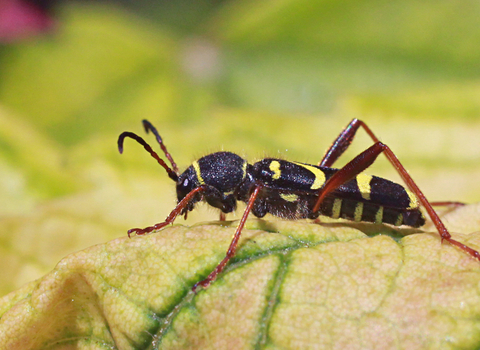
Wasp Beetle ©Penny Frith
Wasp beetle
A clever mimic, the wasp beetle is black-and-yellow and moves in a jerky, flight-like fashion - fooling predators into thinking it is actually a more harmful common wasp. Look for it in hedgerows and woods in summer.
